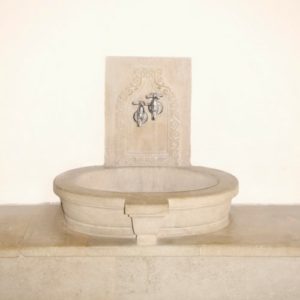History of Indoor Plumbing Information
 Over the course of a typical day, whether we’re at work, at home, at school, or even shopping or dining at a restaurant, we benefit from indoor plumbing. It’s what lets us quickly use a restroom if we need it, turn on a tap to wash some vegetables, or even step into a tub for a long, relaxing bath.
Over the course of a typical day, whether we’re at work, at home, at school, or even shopping or dining at a restaurant, we benefit from indoor plumbing. It’s what lets us quickly use a restroom if we need it, turn on a tap to wash some vegetables, or even step into a tub for a long, relaxing bath.
But for many centuries—and even millennia—this kind of easy access to water wasn’t a convenience, and it wasn’t even a luxury. Indoor plumbing is the culmination of many generations of engineering. And that drive to innovate wasn’t motivated purely by scientific curiosity or the pursuit of excellence. In the beginning, it was a matter of survival.
Egypt & Rome Blaze a Trail
 For Egyptians, no plumbing meant no civilization, and possibly starvation. Egypt is a desert region, and aside from the Nile River, other large sources of water are hard to come by. The Egyptians were among the first to make pipes, first out of clay, and then copper to carry water to where it was needed.
For Egyptians, no plumbing meant no civilization, and possibly starvation. Egypt is a desert region, and aside from the Nile River, other large sources of water are hard to come by. The Egyptians were among the first to make pipes, first out of clay, and then copper to carry water to where it was needed.
Eventually, the Romans would surpass the Egyptians, not in technology, but in scale. The famous Roman aqueducts carried huge amounts of water from remote sources to cities and towns.
Then the Romans took things a step further, and branched off their aqueducts, allowing the water to flow directly into homes. They even created early attempts at sewer pipes, hollowing out elm logs and using them to try to control the amount of human waste accumulating in their settlements.
A Step Backwards During the Age Of Reason
You’d think that as history progressed, technology and engineering would improve and things would only get better. But in the world of plumbing, you’d be wrong, especially when it comes to indoor plumbing. Even one of the most famous royal figures of the 18th century, Marie Antoinette, didn’t have the benefit of indoor plumbing.
What did this mean for her? For one thing, she could only wash once a month, and the rest of the time she tried to hide her smell through the extensive use of perfumes. The other more pressing issue was a lack of indoor plumbing meant a lack of sewage management. So even the royal palaces of France had human waste soaking—or simply sitting—in hallways, on rugs, in royal chambers, and many other parts of the palaces.
It’s Different Now
 21st-century indoor plumbing is in a very different place now. Modern plumbing materials and techniques let water flow to any part of a home that needs it. Water treatment procedures mean that our water is safe to drink, cook with, and wash with.
21st-century indoor plumbing is in a very different place now. Modern plumbing materials and techniques let water flow to any part of a home that needs it. Water treatment procedures mean that our water is safe to drink, cook with, and wash with.
Bathtubs and showers mean we can bathe every day, or multiple times a day if we want, and toilets allow us to quickly and safely dispose of waste in a way that doesn’t put anyone’s health at risk.
Thanks to companies like Flow Master Plumbing & Pump Service, indoor plumbing is something you can always count on. Even when something goes wrong, and you need a repair in Oxford, NC, getting the help you need is fast, convenient and easy. It’s just like the plumbing that you rely on without a second thought in modern America.
